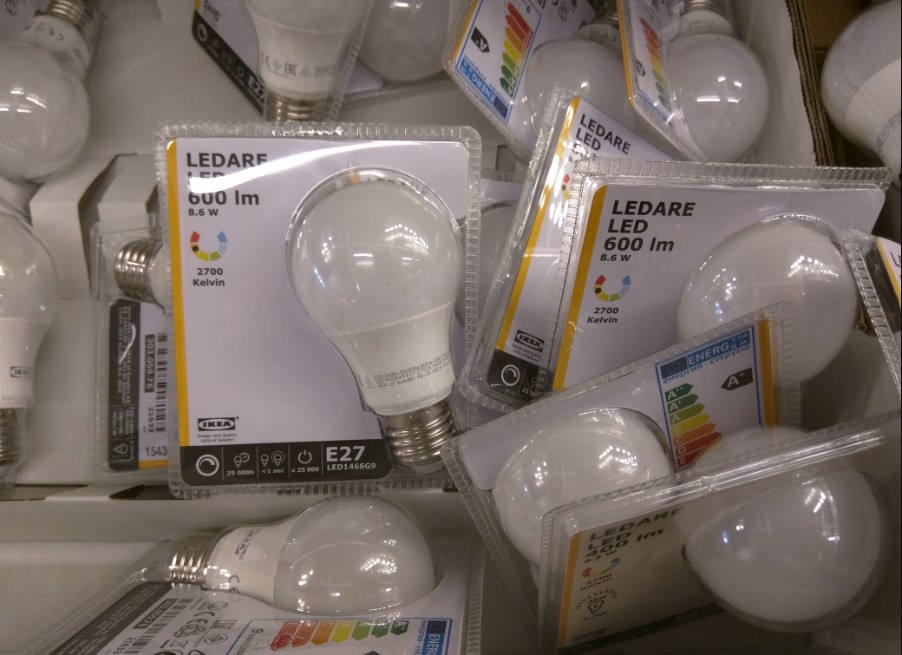- cross-posted to:
- news@lemmy.world
- green@lemmy.ml
- cross-posted to:
- news@lemmy.world
- green@lemmy.ml
Incandescent light bulbs are officially banned in the U.S.::America’s ban on incandescent light bulbs, 16 years in the making, is finally a reality. Well, mostly.



I don’t know what kind of shit LEDs you’ve been buying but I’ve yet to ever have to replace one. Been using them for many years already.
LED’s produce a lot of heat at higher “wattages”. IE: the 75w+ equivalents can throw out some heat. And if its recessed in a can or upside down on a chandelier but with a decorative covering, they will often go out due to heat. Hell I have seen some with giant heatsinks on them to try and compensate.
I had a series of 150w LED’s i was burning through. Eventually I moved to just replace the bulb and fixture with a ceiling light like this
LED’s are also sensitive to dirty power, probably more-so than Incandescents. I have run through some because of surges and brownouts as well.
I generally use Phillips brand LED bulbs if it helps, but do have some others.
Finally, the lower wattage bulbs (ie: 10-15w equivalent) will sometimes have a “pulse” to it. Dimmer LED’s also tend to do this, and you often have to tune the dimmer switch to a higher brightness for “low” to compensate.
All that said, they are still leaps and bounds better.
Removed by mod
Quite literally the less heat they emit per unit of power they consume the more efficient they are, so this is very much an area were getting the more efficient LED light bulbs (which in the consumer space are the filament ones) will both reduce heat waste AND save you power per unit of light emitted.
(In fact you should select these things on light emited - i.e. lumens - rather than on wattage and even for the same lumens aim for the fewer watts as possible since that means they consume less for the same results, which, as pointed above, also mean heat emission as that’s literally power being wasted)
Removed by mod
deleted by creator
Funny you mention Phillips because that’s the brand I like, too. Just recommended it to someone here in fact.
I’m not sure what wattage my ceiling fixtures are; I’ll check.
Yeah. they are generally my favorite as well.
These were the ones I was running through like crazy in my kitchen. Storms often meant they would fail. I edited my original comment and posted a pic of the design i moved to since the can they sat in didnt evacuate heat well at all.
https://www.amazon.com/gp/product/B08667M3BR/ref=ppx_yo_dt_b_search_asin_title?ie=UTF8&th=1
Frankly i tend to stick with one brand in general because it provides a consisten light color (ie: 5000k or 3500k warm yellow etc). Rando brands say 5000k daylight but are slightly off and it drives me nuts.
I have some in warm yellow on certain fixtures and others in daylight for other fixtures. The warm yellow ones we will use at night. (i have a large number of light fixtures in my house for some reason to, which makes this easier)
They generate lots less heat that an equivalent incandescent bulb. It’s most likely the dirty power problem you’ve described.
They do. But incandescent bulbs don’t have circuitry prone to heating failures. It’s just a filament.
So it’s not an equivalency thing.
Same experience here. Every single LED lightbulb i’ve bought, since the time I started using them, has outlasted basically everything else I’ve purchased before. It draws less energy and doesn’t produce basically any heat too, which is excellent
You have to give the industry some time to circle the wagons and enshittify led bulbs so that they only last 10,000 hours
You’re going to want to replace them when they stop getting security updates…